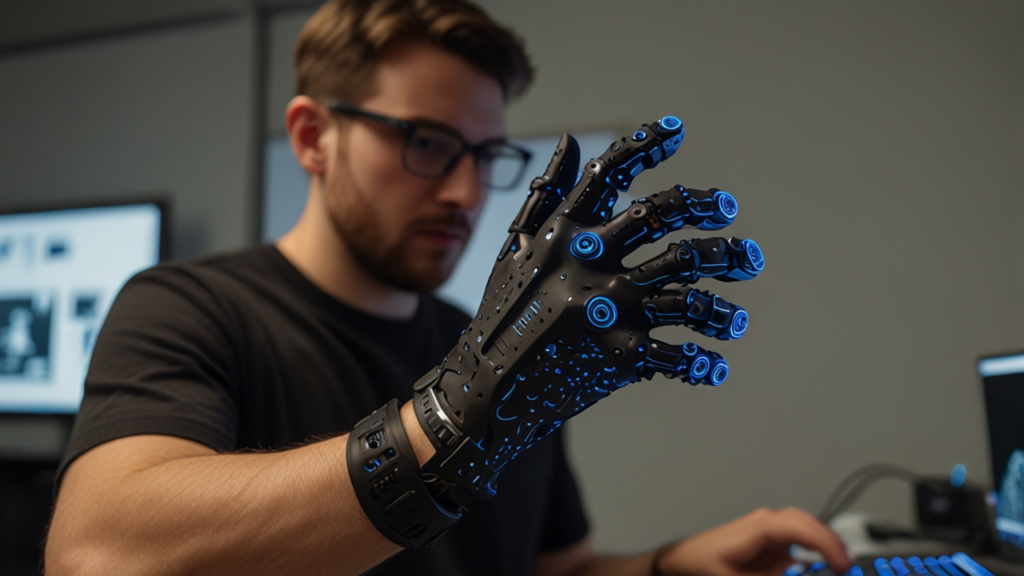Wireless Power: 6 Exciting Applications
Wireless power has transformed the way we think about energy delivery. By eliminating cables and direct connections, it paves the way for a more efficient and seamless user experience. In today’s fast-changing world, this technology is making its mark in mobile gadgets, medical devices, and even electric vehicles.
This article explores the evolution, methodologies, and real-world applications of this groundbreaking technology. By understanding how it got to where it is today, you can appreciate its potential future impact on everyday life. Read on to discover how this innovation is reshaping our connection with energy.
Whether you are a tech enthusiast or simply curious about emerging trends, you will find valuable insights into how wireless power is being applied to solve real-world challenges. Enjoy this in-depth exploration and feel free to share your thoughts or questions.
Table of Contents
- Introduction to Wireless Power
- Evolution and History of Wireless Power
- How Contactless Energy Enhances Wireless Power
- Remote Charging Systems and Their Applications
- Real-World Case Studies of Wireless Power
- Inductive Transfer in Modern Wireless Power Solutions
- Future Trends: Cable-Free Revolution and Beyond
Introduction to Wireless Power
The basic idea behind this technology is to transmit energy without the need for wires. This innovative approach offers users a simpler and cleaner experience with fewer physical constraints. For more information on cutting-edge designs, check out New Technology Products.
Overview of Concepts
Wireless power is an innovative solution that eliminates the need for physical cables to deliver energy. The concept is based on transferring energy through the air using electromagnetic fields. This mode of energy delivery emerged from scientific breakthroughs in the early 19th century and has grown in sophistication over time. Researchers discovered that by using electromagnetic induction and resonance, electricity could be transmitted without a direct connection. In practical terms, this means that devices such as smartphones, electric toothbrushes, and even electric vehicles can be charged simply by placing them on or near a transmitter.
This approach not only enhances user convenience but also simplifies the design of modern gadgets. Many experts argue that this technology could revolutionize industries by enabling truly mobile charging solutions. Its development is closely linked with the invention of the Tesla coil and subsequent advancements in the field. Have you ever wondered how eliminating wires could change your daily routine?
Fundamental Principles
At its core, the science behind wireless power is grounded in the principles of electromagnetism. The initial discovery by Hans Christian Oersted and later developments by Nikola Tesla laid the foundation for this technology. Essentially, it works by creating a magnetic field that couples with a receiver coil, converting the field back into electrical energy.
Today, modern wireless power systems harness these principles with advanced circuitry that minimizes energy loss. The ability to transmit power over short distances using inductive coupling has become commonplace in many devices. Additionally, magnetic resonance techniques extend the range and efficiency of the energy transfer. This means that the energy does not always need to be transmitted through direct contact. Instead, it can be delivered as long as the receiver is tuned to the same resonant frequency as the transmitter. With the increasing push towards sustainability and innovation, such technologies are becoming ever more relevant. What are your thoughts on a future without charging cords?
Evolution and History of Wireless Power
The journey of wireless power dates back to revolutionary experiments in the 19th century. Over the years, numerous innovations have paved the way for its modern-day applications. For more perspectives, visit Smart Devices. Additionally, learn about historical details from history timelines.
Historical Milestones
Wireless power’s development is steeped in a rich history. The initial concept emerged when Hans Christian Oersted observed the relationship between electricity and magnetism in 1819. Later, Nikola Tesla furthered this work with his invention of the Tesla coil in the 1890s, demonstrating the possibility of transmitting energy without wires. Tesla’s ambitious project, the Wardenclyffe Tower, was designed to deliver energy on a large scale, although financial obstacles prevented its completion.
Over time, the progressive refinement of induction and resonance techniques enabled the commercial use of wireless power. In the 20th century, this concept was applied to everyday devices, including electric toothbrushes and biomedical implants, where safety and user convenience were paramount. With continual improvement, the scientific community has pushed the boundaries, resulting in systems that are more efficient over greater distances. Do these historical breakthroughs inspire you to envision new innovations for the future?
Key Innovators
The evolution of wireless power is characterized by the genius of several key innovators and inventors. Nikola Tesla stands as one of the most influential figures, whose experiments laid the groundwork for modern energy transmission methods. His work, demonstrated through public exhibitions, ignited global interest in the concept. Aside from Tesla, numerous engineers and researchers have contributed to a deeper understanding of energy transfer methods, refining the technology based on early models.
Their collective efforts have resulted in increasingly sophisticated systems capable of powering everything from consumer electronics to complex industrial equipment. These milestones serve as a testament to human ingenuity. By analyzing these achievements, it becomes clear that scientific collaboration and persistent research are essential for breakthroughs. How might you leverage these insights in your own innovative pursuits?
How Contactless Energy Enhances Wireless Power
This section delves into how the removal of physical connections transforms energy delivery. The breakthrough in energy transfer enables greater efficiency and enhanced user experiences. Discover more about the integration of technology with Mobile Technology.
Mechanisms of Energy Transfer
The underlying mechanisms that enable energy to be transferred without wires revolve around the principles of electromagnetic induction and magnetic resonance. Both methods rely on creating oscillating magnetic fields that, in turn, induce a current in a nearby receiver. This process allows energy to be transmitted through air gaps rather than through physical cables.
Though the most common method is inductive coupling, recent developments have also focused on magnetic resonance, which can extend the range of power transfer. In short-range applications, inductive systems are highly efficient, while resonant approaches offer the possibility of powering devices at greater distances. Engineers continuously work on improving the efficiency and safety of these mechanisms. Such innovations not only facilitate the charging of consumer devices but also facilitate breakthroughs in sectors like renewable energy and biomedical technology. Could this technology be the key to future energy solutions in your field?
Impact on Daily Use
The application of energy transfer mechanisms has had a profound effect on everyday technology. Consumers now enjoy the benefits of simplified charging processes for devices such as smartphones and wearables. Imagine placing your device on a charging mat and having it power up without cables or plugs.
This improvement streamlines device design and enhances aesthetics, while also reducing clutter in personal and professional environments. On a larger scale, such advancements promise to transform public transit and even electric vehicle charging.
The result is a world where energy is ubiquitously accessible. Reliability, safety, and ease of use are central to this innovation, and its growing adoption hints at vast untapped potential. As you experience these conveniences in your own life, do you see the possibility of broader societal change through these implementations?
Remote Charging Systems and Their Applications
Remote charging systems allow energy to be delivered over a distance, creating a freed-up environment with fewer cables. This approach is not only practical but also opens new avenues in design and functionality. Check out Energy Efficiency insights for related applications.
Innovative Remote Charging Methods
Remote charging systems employ advanced techniques that allow devices to be powered without any physical connector. Among these techniques is the use of radio frequency energy and microwave transmission, which create invisible energy pathways. Recent advancements, such as the introduction of over-the-air charging systems like Ossia’s Cota Universal Base, are setting new benchmarks. These systems can charge multiple devices simultaneously without needing a direct line of contact.
With growing interest from industries and robust market projections (the market was valued at $21.2 billion in 2024 and is expected to expand rapidly), innovative methods are continuously being developed. Safety standards ensure that exposure to electromagnetic fields remains within acceptable limits while maintaining high efficiency. This approach is already revolutionizing consumer and industrial electronics alike, making remote charging a key feature of tomorrow’s smart environments. How might removing physical constraints change the way you interact with your devices?
Applications in Modern Devices
The implementation of remote charging is evident in a variety of modern applications. Today’s smartphones, wearables, and implantable medical devices benefit from these technologies. For instance, research indicates that biomedical devices such as pacemakers have shifted to remote charging methods, reducing infection risks associated with wired connections. In the automotive industry, several European and Asian pilots have deployed remote charging lanes for electric buses and cars. As a result, vehicles can charge while stationary or even on the move.
These applications signify a shift from traditional battery replacements to more sustainable and continuous energy delivery methods. By rethinking how we power our gadgets, designers have made significant herculean leaps towards efficiency and user convenience. Such versatility in application surges the potential for further industrial adoption. With these examples in mind, have you considered how eliminating charging cables could simplify your daily technology use?
Real-World Case Studies of Wireless Power
Numerous practical implementations demonstrate the capability of this technology in real-world settings. Case studies offer insight into how industries are integrating these systems into everyday life. For additional perspectives, visit Innovative Solutions.
Case Study Comparisons
Examining various case studies can illuminate the true potential of wireless power in diverse applications. In the United States, systems like Ossia’s Cota Universal Base have shown that over-the-air charging can power multiple devices simultaneously. In Europe and Asia, pilots have focused on establishing infrastructure for electric vehicles using inductive charging roads and transit systems. These projects have led to reduced reliance on wired power solutions while ensuring safety through regulatory oversight. Comparative studies reveal trends in technology adoption across different regions.
For instance, while North America has been an early adopter primarily due to its strong intellectual property protections, Asia (particularly Japan and South Korea) is rapidly embracing these innovations fostered by governmental support and a culture of tech advancement. Detailed discussions on these projects can be found in analyses published on platforms like Wikipedia. Could reviewing these case studies influence your view on future technology implementations?
Industry Adoption and Impact
The impact of wireless power is increasingly evident in multiple industries. In the automotive sector, several European countries and Asian nations have begun piloting inductive charging systems for public transport and private vehicles. Meanwhile, the healthcare sector has benefited from integrating wireless transmission into the design of implantable medical devices, thereby reducing the risk of infection from traditional charging solutions.
These implementations not only illustrate the technical viability of such systems but also their capacity to improve user safety and lower long-term costs. Industry leaders report robust growth projections, estimating significant market expansions over the coming years. The involvement of prestigious tech companies like Samsung and Sony further validates the significance of this innovation. By exploring these real-world applications, you can better understand the broader societal changes driven by these advancements. Have you seen similar transformative trends in other technology sectors?
Comprehensive Comparison of Case Studies
| Example | Inspiration | Application/Impact | Region |
|---|---|---|---|
| Ossia’s Cota | Tesla Coil | Multi-device charging via RF | USA |
| EV Inductive Roads | Electromagnetic Induction | Charging electric vehicles in motion | Europe |
| Biomedical Implants | Resonant Coupling | Transcutaneous charging of pacemakers | Global |
| Smartphone Charging Pads | Inductive Transfer | Wireless charging for mobile devices | Asia |
| Public Transit Systems | Electrodynamic Methods | Charging buses and trains wirelessly | South Korea |
Inductive Transfer in Modern Wireless Power Solutions
Inductive transfer is the cornerstone of many current wireless energy systems. It delivers efficient energy conversion for portable and stationary devices alike. Learn more about emerging standards with Mobile & Gadgets and refer to insights from steel in the air.
Current Technology Trends
In modern applications, inductive transfer remains the most widely implemented method. The process involves using electromagnetic coils to create a magnetic field that transfers energy from a transmitter to a receiver. Given its efficiency at short distances, this method has been popular for charging everyday devices, such as smartphones and electric toothbrushes. Recent research, including detailed studies available from sources like Scitepress research, emphasizes improvements in coil design and circuit efficiency that further boost performance.
Trends indicate that while newer methods are being explored, inductive transfer continues to dominate the market because of its proven reliability and cost-effectiveness. Manufacturers are now incorporating smarter designs that allow for seamless integration into everyday objects, reducing the visual clutter of cables. With ongoing advancements in material science and engineering, the future holds even more refined systems. In your view, what futuristic devices might benefit most from these improvements?
Challenges and Future Directions
Despite its advantages, inductive transfer faces several challenges. One major concern is the limited range of energy delivery—it remains most effective at very short distances. Moreover, ensuring user safety is critical since exposure to electromagnetic fields must adhere to strict regulatory standards. Current research is focused on overcoming these limitations while striving to improve energy efficiency. Innovations like magnetic resonance coupling are beginning to complement traditional inductive methods, allowing for more flexible applications.
As we push these boundaries, industry experts are calling for greater standardization and interoperability across different systems. Future directions also involve integrating smart sensors to regulate energy transfer automatically, further enhancing safety and efficiency. This area of research is dynamic and multifaceted, as engineers and designers constantly look for ways to extend functionality while reducing losses. What potential solution do you see as the most promising to solve these challenges?
Future Trends: Cable-Free Revolution and Beyond
The future looks promising with emerging innovations and market trends that signal a dramatic overhaul of how we power our devices. New research is paving the way for expansive applications across various sectors. For further updates, check insights from Innovative Solutions and detailed market trends at Microwave Journal.
Emerging Innovations
Looking ahead, the pace of innovation in this field is remarkable. Researchers are developing solutions that push the limits of energy transfer distance and efficiency. Emerging innovations include dynamic charging systems for electric vehicles that work while the vehicle is in motion and charging methods that can be integrated into everyday infrastructure. With collaboration between academia and industry, prototypes that once seemed futuristic are now under active development.
These innovations not only promise enhanced efficiency but also pave the way for smarter, more adaptable systems that could revolutionize how we interact with energy. Alongside technological improvements, the market is increasingly emphasizing safety, user convenience, and sustainability. As new products reach the consumer market, these advancements are set to reshape industries from transportation to healthcare. What innovative application of these technologies would you like to see develop next?
Market Outlook and Predictions
The market for wireless power solutions is on a robust upward trajectory. Analysts predict sustained double-digit growth in the coming years, driven by increasing adoption across multiple sectors. For instance, projections indicate that specific wireless charging components might reach a market value of billions in the near future. The rapid integration of these systems in consumer electronics, transportation, and industrial automation underlines a shift towards more sustainable and user-friendly power delivery models.
Investors and innovators alike are taking note, as regulatory bodies work to harmonize standards across regions. This global effort is fundamental to realizing the full potential of a cable-free environment. With constant technological enhancements and growing consumer demand, the future of energy transmission appears more promising than ever. How do you envision the wireless charging landscape evolving in the next decade?
Exclusive Insights on Wireless Power Applications
In many unexpected corners of the modern landscape, innovative solutions have been quietly transforming everyday experiences. Consider a scenario where the focus shifts from traditional methods to a new way of thinking about resource delivery. This fresh perspective emphasizes simplicity and streamlined operations in dynamic environments. It champions a future where complex infrastructure seamlessly blends with natural design, resulting in an approach that not only reduces clutter but also enhances functionality. Emerging insights hint at possibilities that go beyond current norms, suggesting that the role of conventional constructs might soon be reimagined entirely.
This forward-thinking approach is paving the way for design philosophies that favor harmony between technology and lifestyle, proposing a framework that inspires new creative expressions. As designers explore these uncharted territories, they may uncover novel applications that redefine everyday routines. The potential is vast, and while many questions remain unanswered, the drive to innovate continues to signal a significant shift in thinking. Could this new wave of innovation transform the relationship between the built environment and its users?
As you reflect on these ideas, think about how emerging trends can spark a revolution in industries that once relied on traditional methods. The imaginative possibilities extend from everyday scenarios to groundbreaking industrial changes. This thought-provoking environment encourages a reevaluation of our fundamental approaches, urging us to embrace change and innovation. In doing so, it creates opportunities for a future that seamlessly integrates technology into daily life.
FAQ
What is wireless power and how does it work?
Wireless power refers to the transfer of energy without physical connectors, typically using electromagnetic induction or resonance. It works by transmitting energy from a transmitter to a receiver through magnetic fields.
How has the history of this technology influenced its current applications?
The origins of this technology date back to the 19th century. Pioneers like Nikola Tesla laid its foundation, influencing how modern systems use inductive and resonant coupling for efficient energy transfer in today’s gadgets.
What are some common applications of wireless power?
Wireless power is used in charging mobile devices, powering electric vehicles, and in medical devices such as pacemakers. Its versatility has led to applications across consumer electronics, transportation, and healthcare.
What challenges does wireless power face?
Major challenges include limited transmission range, efficiency losses, and safety concerns regarding electromagnetic exposure. Ongoing research focuses on overcoming these issues while improving performance.
What does the future hold for wireless power technology?
The future is promising with continued innovations in dynamic charging and broader market adoption. Projections suggest significant growth, driven by increased integration into everyday applications and industrial automation.
Conclusion
Wireless Power is steadily revolutionizing how we access energy, offering cleaner, more efficient power solutions for a myriad of applications. From mobile gadgets to industrial automation, each breakthrough points to a future with fewer cables and greater convenience. Have you experienced such advancements in your daily life?
The journey from historical experiments to modern innovations demonstrates that the commitment to pushing technological boundaries is unwavering. As you reflect on these insights, consider the transformative potential that lies ahead. For more information on emerging trends and detailed case studies, feel free to explore additional resources.
Your thoughts and feedback are important. Please share your ideas, comment, or reach out through our contact page at Contact. Let’s collaborate to shape a future powered by innovation!



